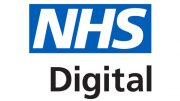Improving patient flow is a burning issue and rightly so. Our healthcare system is struggling from the sheer weight of demand and there are many contributing factors. People living longer, high elective waiting lists, slow post-pandemic recovery and the increasing complexity of patients’ past medical history are all feeding into it. As a result, the number of trusts with bed deficits is growing. Queues of ambulances are increasingly waiting at hospitals and more patients are receiving care in corridors, cupboards or carparks.
However, it is not just the patients who will benefit from better patient flow. As a doctor, I’m one of hundreds of thousands of clinicians and other NHS staff experiencing these flow pain points during every shift. As the face of the NHS at the front door, we are repeatedly met with the completely understandable frustrations of patients and family members alike and spend a significant amount of our time apologising for the delays in their care. Over time, this moral injury of constantly disappointing patients takes its toll, physically and mentally. Clinician burnout is a topic that’s close to my heart, with 34% of NHS staff currently reporting burnout and exhaustion.
Poor digital tools only exacerbate these high rates, with poor IT infrastructure frequently cited as a significant contributor to burnout. Frontline clinicians want a digital strategy with computers that truly work and software/EPRs that streamline workflows, talk to each other and remove paper notes. Specifically for patient flow, they want to move away from siloed spreadsheets and time-consuming phone calls. They want a system that provides the space and beds to deliver the care patients need, when they need it.
NHS England clearly sees important enablers for its recovery and longevity. The Operational Planning Guidance for 2024/25 has an emphasis on strong digital foundations being essential for transformation, access, quality and improvement. It received an additional £3.4bn in the Spring Budget to increase productivity with digital transformation and is currently working on a productivity plan due to be published this summer.
Improving patient flow by unveiling end-to-end visibility of capacity
We can’t begin to solve the problem of flow if we can’t see it. This is where a patient flow management system can make one of the biggest differences to optimise a patient’s journey through the hospital. The system can enable better management of discharges and internal transfers by providing real-time insight into bed status, bed availability and patient movement across the whole hospital. With this increased visibility, it’s possible to take a proactive approach to patient flow and to start reducing bottlenecks, delays and overcrowding.
Saving a life by creating a space
When A&E is full, clinicians are intensely aware that the red phone can ring at any moment. If it does, it means an ambulance is 5–10 minutes away with any emergency, such as a patient in cardiac arrest or a child who’s not breathing. In response, clinicians need to make a resus bed available. This starts a chain reaction because whoever is already in that space needs to be moved to a less critical area and so on.
In those situations, it’s simply about creating a space as quickly as possible to help save that patient’s life. While immediate decisions will still need to be made, a patient flow system can help streamline the process of getting patients admitted to wards to free up ED beds. As a result, this helps create pre-emptive space for emergency arrivals. Previously, this would usually be completed by cumbersome phone calls, pagers or emails. Using a digital patient flow system can enable users to search for appropriate beds by working within set parameters and identifying the most suitable patients within those beds who can be transferred to other areas.
Facilitating effective communication with ancillary staff
In many hospitals, communications with ancillary staff is still done via phone calls, radios and separate systems. In contrast, if a patient needs an X-ray or to be moved to another ward, a digital flow system can facilitate the request to the portering team via an app on their phone. It provides work lists so they can triage and manage the availability of beds or services that patients are transferring to.
Similarly, requests can be managed and tracked for transport and cleaning services. It optimises the use of resources further by calling staff that are nearest to where the patient is currently or where the service is required.
All of these uses cases will help save time. Each instance might save anywhere between 5–60 minutes and if you multiple those savings over a month/year; it amounts to enormous savings that will make a meaningful difference to a trust’s performance.
Wrightington, Wigan & Leigh NHS Foundation Trust is spearheading a digital revolution and prioritising patient flow in the process using Altera’s solution. The implementation will enable the trust to seamlessly integrate with our Sunrise™ EPR and use the system in all the ways I’ve discussed to improve patient care. Following a current/future state analysis, the trust is projected to double the number of people discharged before noon. Longer term, it is aiming to achieve 40% of morning discharges by 10 a.m.
We’re engaged in conversations with several more of our EPR clients to support them with their plans to integrate a digital patient flow solution. Our system is also fully interoperable with any other EPR in the country.
Patient flow is a critical issue in every sense. When trusts are congested it spreads like wildfire, adversely affecting everyone. It’s a burning issue that we must get under control. We now have a real opportunity to use digital flow management to start easing congestion in our hospitals. Through appropriate implementation, patients will benefit from being in the right location to receive optimal care, pressures and demands on staff can at least begin to improve, ambulances can get back on the road and boosted efficiencies and savings can help plug the holes in finances.
By Ed Hutchison, Clinical Solutions Specialist at Altera Digital Health and practising NHS Doctor





